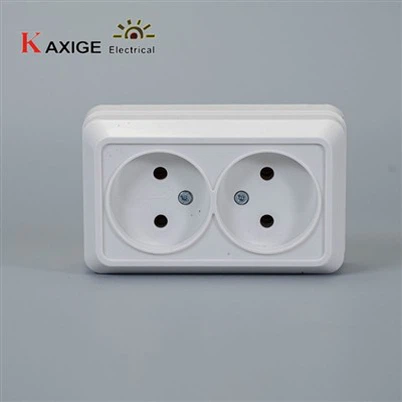How does socket tracking work in a network with intent - based networking?
Leave a message
Hey there! As a track socket supplier, I've been diving deep into how socket tracking operates in a network with intent-based networking. It's a fascinating topic that's shaping the future of networking, and I'm stoked to share my insights with you.
First off, let's break down what intent-based networking is. In simple terms, it's an approach that focuses on the desired outcome or "intent" of a network. Instead of manually configuring every single device and connection, network admins can define high-level goals, like ensuring a certain level of performance or security. The network then figures out how to achieve those goals on its own. It's like telling your car where you want to go, and it takes care of all the driving details.
Now, when it comes to socket tracking in this kind of network, things get really interesting. Socket tracking is all about keeping tabs on the connections between devices at the socket level. A socket is basically an endpoint for communcation in a network. It's like a phone number for your device - it allows other devices to find and talk to it.
In a traditional network, socket tracking can be a real pain. You've got to monitor each individual connection, figure out what's going on, and make sure everything's running smoothly. But in an intent-based network, things are different. The network can use the high-level intent to automatically track sockets in a more efficient way.


For example, let's say your intent is to ensure that all critical applications have a high level of availability. The network can then track the sockets associated with those applications. If it notices that a socket is experiencing issues, like a high latency or a dropped connection, it can take action to fix the problem. Maybe it reroutes the traffic to a different path, or it allocates more resources to the affected socket.
One of the key technologies that makes this possible is software-defined networking (SDN). SDN separates the control plane (where the decisions about how the network should operate are made) from the data plane (where the actual traffic flows). This allows the network to be more flexible and responsive. In the context of socket tracking, SDN can be used to monitor and manage sockets in a centralized way.
Another important aspect is network function virtualization (NFV). NFV allows network functions, like firewalls and load balancers, to be virtualized and run on standard servers. This makes it easier to scale and manage the network. When it comes to socket tracking, NFV can be used to add additional functionality, like deep packet inspection, to help identify and troubleshoot socket-related issues.
Now, let's talk about some of the products we offer as a track socket supplier. We've got a great range of wall switches and sockets that are designed to work seamlessly in an intent-based network. For example, our 81W-1 1 Gang Switch with Lamp Indicator is a great choice for those who want a simple yet reliable switch. It's got a built-in lamp indicator that makes it easy to see if the switch is on or off.
Our 73V 2 Gang Sockets Grounding is another popular product. It's designed to provide a safe and stable power supply for your devices. The grounding feature helps to protect against electrical shocks and other hazards.
And if you're looking for a more advanced switch, our 8607 2 Gang Switch with Lamp Indicator is a great option. It's got a sleek design and a range of features, like a built-in timer and a remote control.
So, how does all this fit into the bigger picture of socket tracking in an intent-based network? Well, our products are designed to be easily integrated into the network. They can be monitored and managed using the same intent-based principles as the rest of the network. This means that you can ensure that your sockets are operating at their best, and that any issues are quickly identified and resolved.
In conclusion, socket tracking in an intent-based network is a powerful technology that's revolutionizing the way we manage and monitor networks. By using high-level intent, SDN, and NFV, we can track sockets more efficiently and effectively. And as a track socket supplier, we're here to provide you with the products and solutions you need to make the most of this technology.
If you're interested in learning more about our products or how they can fit into your intent-based network, don't hesitate to reach out. We're always happy to have a chat and discuss your specific needs. Whether you're a small business or a large enterprise, we've got the expertise and the products to help you take your network to the next level.
References
- Some networking textbooks about intent-based networking and socket tracking concepts
- Industry whitepapers on software-defined networking and network function virtualization
- Technical blogs and articles related to modern network management and socket technologies






